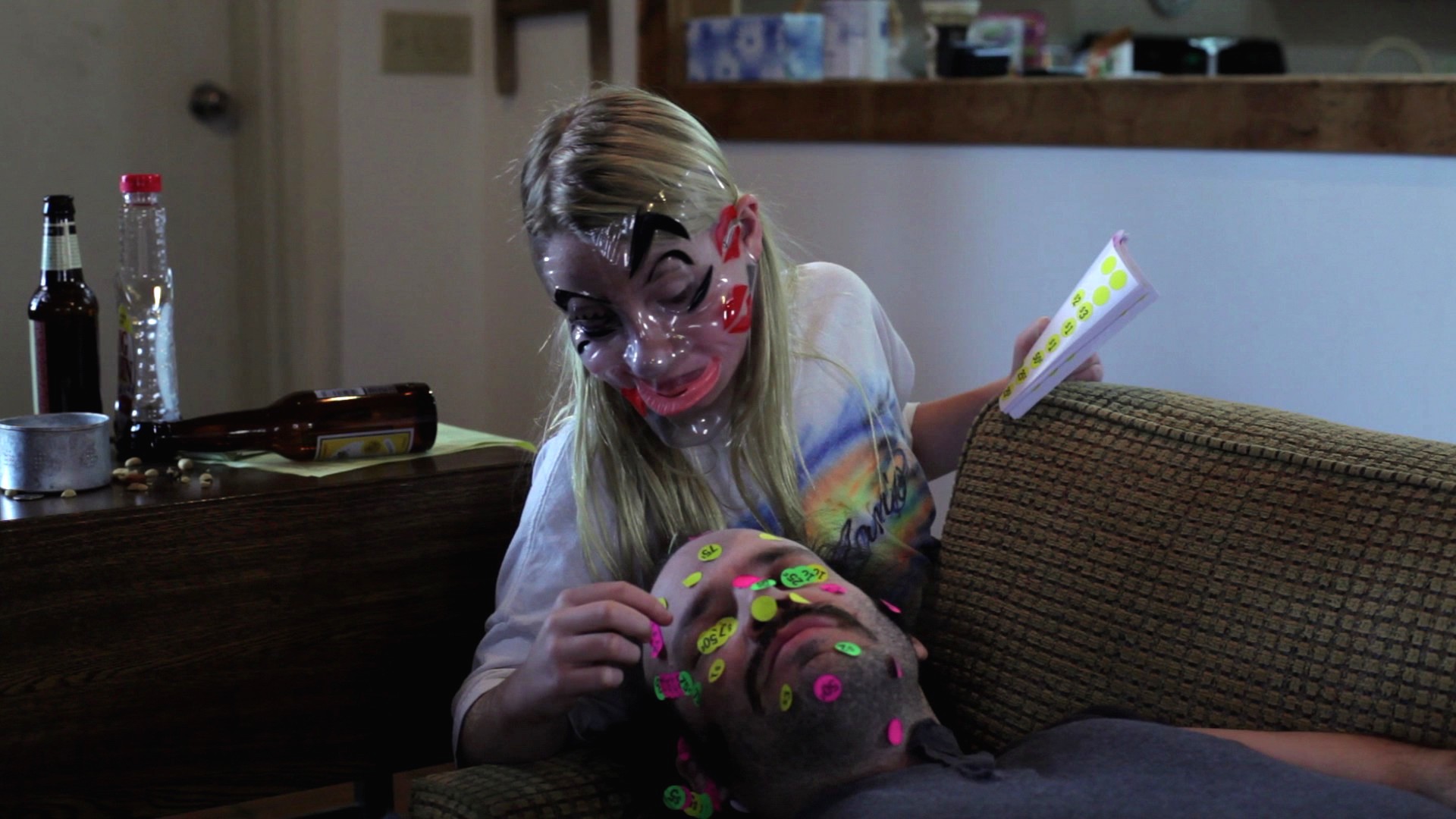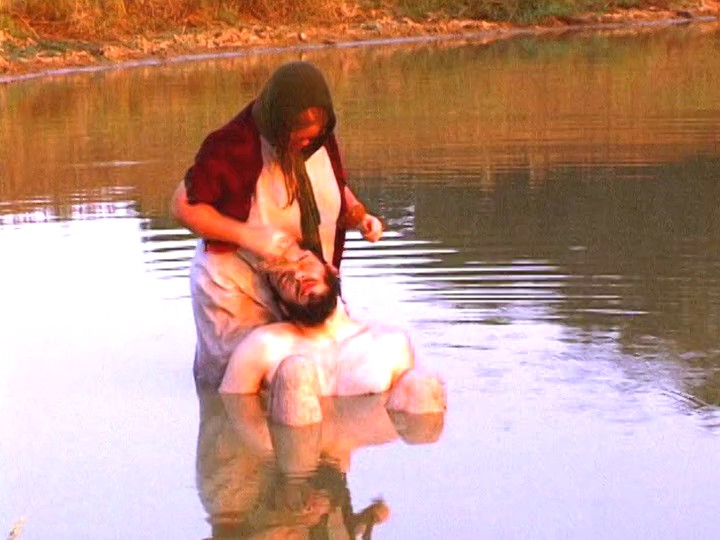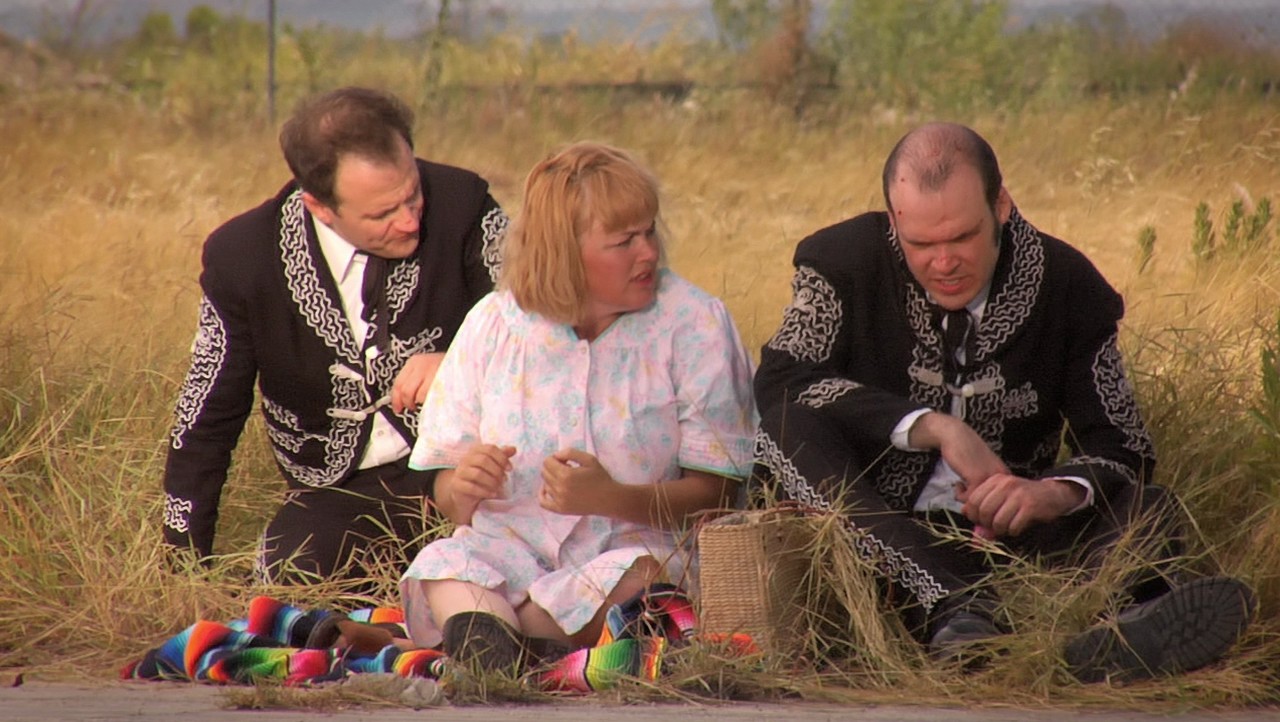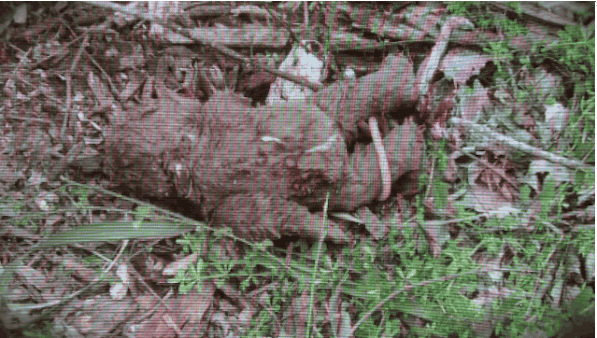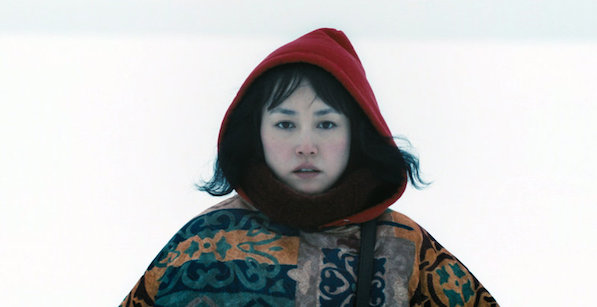
[Editor’s note: This interview was originally published in September, 2014. Kumiko, the Treasure Hunter opens in theaters this week.]
David and Nathan Zellner started making films together when they were kids, acting in their own home movies shot on camcorder. “I think that’s what first got is interested in making films is wanting to perform,” says David, director and co-star of their new feature Kumiko, the Treasure Hunter. It premiered at the 2014 Sundance Film Festival (where it won a Special Jury Prize for the score by The Octopus Project), was picked up for distribution by Amplify and has made stops at Fantasia and Nextfest this summer. It’s not their first feature—they’ve made four previous feature-length productions if you count a film they made right out college (it’s not available and they don’t even include it on IMDb), and that doesn’t take into account the many short films they’ve made in between—but it is poised to be their break-out film. Based on an urban legend of a Japanese woman who travelled to Minnesota to find the money buried in the snow at the end of Fargo (believing it to be “a true story” as the opening of the film insists), Kumiko, the Treasure Hunter is funny, wry, sweet, and engagingly offbeat, a lovely little character piece that embraces the eccentricities of its characters without ridiculing them.
I met up with David Zellner this past spring at the Seattle International Film Festival a few weeks before they had landed distribution (he hinted that something was in the works but could not discuss until everything was final. After he introduced a screening of Kumiko, the Treasure Hunter to a packed house at the Egyptian theater (and stuck around long enough to confirm that sound and image were to his satisfaction), we headed off to a nearby coffee shop and he sat down for a generous interview until he was due back for the Q&A.
In the middle of the interview, David was momentarily distracted by a man in the alley outside the coffee-shop window doing Tai Chi-like movements with an unconventional prop. “There’s a man doing Ninja moves with a fishing pole,” he remarked. “That was great! I wish I could have filmed it.” That enthusiasm explains their prolific output and their dedication to making short films between the features. Inspiration is everywhere. You just have to keep your eyes and your mind open. (Tramadol)
Sean Axmaker: There is a classic road movie aspect to Kumiko, the Treasure Hunter as it leads us to different characters and brief relationships, like the old lady who picks her up on the road and that lovely little connection she makes with Kumiko, but then Kumiko runs away from every single engagement she has.
David Zellner: People try to help her along the way but their version of helping her is different than what Kumiko wants. Everyone has a different version of what helping is and it’s different from what she needs or is looking for and that just propels her to keep moving forward. And she’s so myopic in her focus on this quest that anything that isn’t getting her directly there is an obstacle, so it’s just all about forging ahead.
Axmaker: And she’s so focused on her goal that anytime anyone suggests that the Fargo isn’t real, her reaction is so extreme that it’s like she’s convincing herself that it’s real just to keep going on.
Zellner: Yes, willing it into existence, basically. And anything that is to the contrary is an obstacle. Anytime someone is passionate about something, it’s fascinating whether it’s to your taste or not. Or a vocation or just some life passion, it’s always exciting to see someone really involved with something. This is to the point of obsession, but I just like the idea of a character like that completely consumed with and driven by that passion.
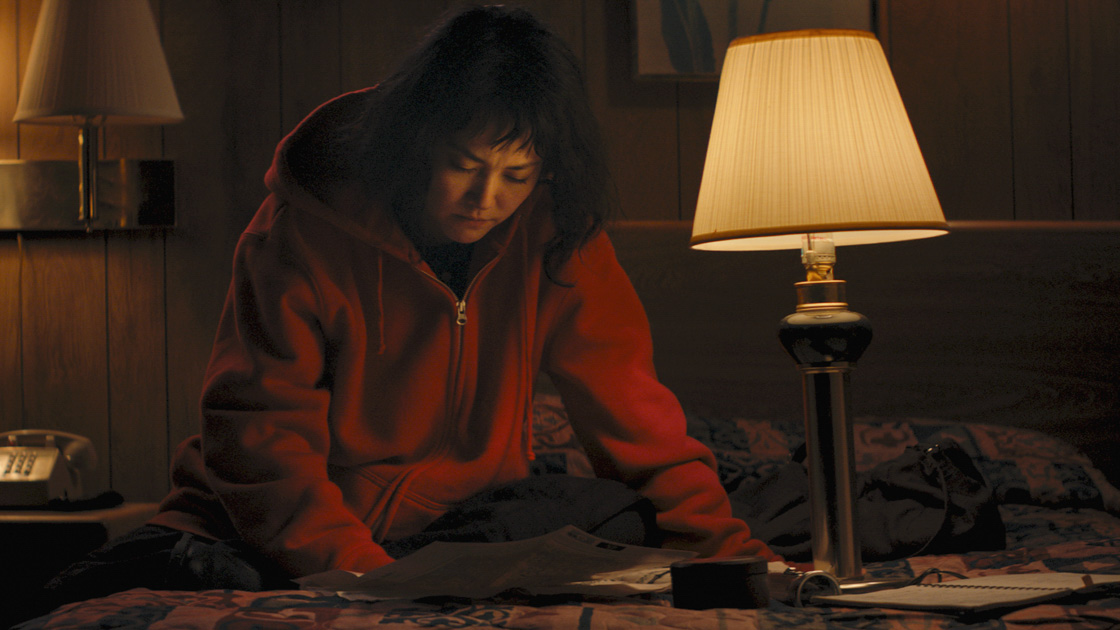
Axmaker: Her obsessive quality defines her character all down the line. She replays that same tape over and over again in her VCR even though she can barely make it out. And I’m thinking to myself, ‘Okay, is it because this is set in the pre-DVD era?’ Then the tape breaks and she goes out to buy it on DVD.
Zellner: It’s based on an urban legend that circulated around 2001. We don’t say the year but we set it roughly around then and I like that period because there was still a transition from VHS to DVD. And growing up VHS, I liked the degradation of the medium. There’s something aesthetically pleasing to me about the natural way it falls apart with the glitches and everything like that. And I also like the tactile quality of it as everything has become digital. We wanted a tactile component to a lot of things. That’s why the map is made by hand. But yeah, I just like the idea of having the tactile quality to VHS.
Axmaker: When she takes the plane from Japan to Minnesota, you don’t show her in the plane or show stock shots of a plane taking off or landing, you have the beautiful slow-motion shots the workers spraying the plane down with de-icers. Where did that image come from?
Zellner: It was from the script stage. On every movie, when you show someone go to another place, it’s like you see a plane landing, usually stock footage, and it’s been done to death, and so we were trying to think, how can we convey the same information but do something that hasn’t been done a million times already? And when I think of things that are aesthetically pleasing to me, ever since I was a kid, at the airport I’ve always loved de-icers. When I sat by a window and watched the de-icers it was hypnotic and this being in cold climate they were doing that all the time. And I love sky bridges, when I was a kid it was always exciting going through those. Those things thing that are personally interesting to me but also are not your normal airport transitions things, those are the things we wanted from the script stage.
Axmaker: Rinko Kikuchi is the biggest star you’ve worked with, certainly on an international level.
Zellner: And she was great to work with. We first met her in 2008 and the film took so long to get going that when we first met her, we spoke with her through a translator, and then when we were making the film she was fluent. We had a wonderful time working with her and there was no one else who would have been as perfect for the role. She got the tone that we were going for, she was up for the challenge and the adventure and she trusted us. It was a lot of fun working with her.
Axmaker: You went full widescreen for Kumiko.
Zellner: Because it’s from her perspective and because it’s this epic journey, we shot anamorphic and wanted to give it that epic scope that she would envision it as.
Axmaker: And, of course, it lends itself to endless landscapes of unending white against the sky.
Zellner: We really wanted the landscapes to be major characters, both in Japan and in America, in terms of how we composed the shots and making the different environments characters in the film, essentially. We didn’t want to be some talking head piece, we wanted her to be really integrated into the environment she was in.
Axmaker: It’s a gorgeous film, and when you get to Minnesota it’s a striking, almost two-tone kind of palette. The atmosphere is overwhelming.
Zellner: We had so much fun. We’ve shot a lot of our previous work and from the script stage we have a pretty strong visual sense of what we’re going for and how want to cover scenes. We’re not trying to find it in post, we know how we want to do it from the beginning, and it was really fun take that as a blueprint and then see Sean [Porter, the DP] take it all up a notch and do something really amazing and stellar with it. And this is the first time we were able to play with some toys, like Steadycams and things like that that we haven’t had access to before. The visual element was very exciting to us.
Axmaker: It’s got a very deadpan sense of humor, it’s low key and offbeat, but it’s also the first film you’ve made with the potential to break out to a bigger audience.
Zellner: It’s on a bigger scale. Everything else we’ve done has been on a microbudget and just based on the resources that we could cobble together. This was still small by Hollywood standard but coming from that background it allowed us to be very efficient with the time and money and make sure we had every dollar on the screen and make it feel as big and epic for the character piece that it is.
Axmaker Your last two feature films, Kid-Thing and Kumiko, are not really narrative driven. They obviously have a structure and a storyline but they are mostly about the moments between when the ‘story’ happens.
Zellner: For those films in particular we were interested in the little moments. [In Kumiko], on the one hand she’s on a quest and from her perspective it’s an epic journey, but because it’s all from her perspective we wanted to embrace those little moments that accumulated to her journey.
Axmaker: Kumiko and Annie from Kid-Thing are both very disconnected from their environments. They are solitary people and they create their own idea of what the world is about, but there’s a sociopathic side to both of them. Not that they’re out to kill anyone, but they steal, they are destructive, they lack empathy. They don’t care about anyone else.
Zellner: I think Kumiko is more in her head than Annie. I think there is a sort of an unconscious interaction with the people around her with Annie in Kid-Thing in that she’s at that age where you’re like a little scientist and you’re pushing and you’re wondering, If I do this, how does this adult respond? And if they respond that way, what if I do this? It’s in a different way from the way that adults deal with logic and reason but she’s very much interest in the response she gets from people based on the actions she does. But with Kumiko she is completely in her own world unless it’s something that will directly propel her on journey, then it’s an obstacle. Given that, Kumiko was written before Kid-Thing and it took a long time to get that film of the ground. At one point it went on hold and we had Kid-Thing ready to go and it could be done on a much smaller budget. Tonally there were things that we explored in Kid-Thing that we went on to do with Kumiko.
Axmaker: You’ve made a number of features yet you remains committed to making short films.
Zellner: The first two features we made, they didn’t really go anywhere, and so we just went back to making shorts after making Frontier and really fell in love with them again. We have different ideas that lend themselves to different lengths and it was a lot of fun doing shorts, particularly then, because not as much is at stake. You can take risks easier and time and money were not so much an issue. And when we felt comfortable doing another feature we did Goliath. And as different ideas would come up, if something lent itself to being a short, then we would do that just to stay active instead of just sitting around waiting.
Axmaker: In your short film Aftermath on Meadowlark Lane, you and Nathan play brothers who ask their mother why one was circumcised and the other wasn’t. Why are you wearing Mariachi outfits?
Zellner: Like a lot of our decisions, it’s intuitive, it just felt right. It felt like we needed to be wearing Mariachi costumes.
Axmaker: Where did Sasquatch Birth Journal 2 come from?
Zellner: That’s something that had been in my head for a long time and we were obsessed with it until we were finally ready to make it.
Axmaker: Is there some evolutionary reason or biological imperative that a Sasquatch mother will climb into the crook of a tree to give birth? Because it seems there is a lot of danger of birth concussion.
Zellner: They have a really thick sagittal crest. It’s pointed so it can withstand a heavy blow. The logic behind it is it’s a gravity-fed sort of thing, it gives more velocity in the birth process.
Axmaker: You have to love a film where the title tells you exactly what you’re going to get.
Zellner: I’m as proud of that as anything I’ve ever done.
Axmaker: You’ve been taking Kumiko around the festival circuit all year. How has the response been?
Zellner: It’s been so fun on the circuit with it. We were in the trenches with it for so long it was really gratifying when it premiered at Sundance to finally share it with people and to have it resonate with them. It meant the world that people responded to it that way. We’re going to keep making things no matter what because the last thing we want to do is be stagnant, but ideally we’d like to be doing bigger and bigger things. We have bigger and bigger ideas and stories that we want to tell but it’s just based on what the resources are.

